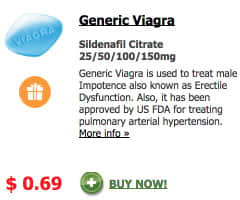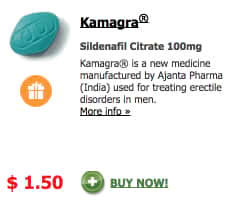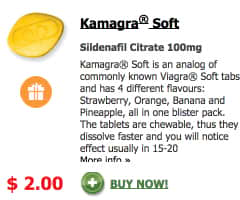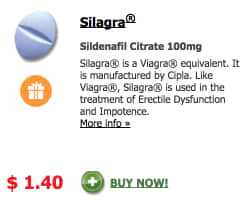The number of men suffering from impotence all over the world is believed to be at around a hundred and fifty million. This makes them a huge market of opportunity for pharmaceutical corporations looking to cash in on the battle against erectile dysfunction. However, until now, only three brands have been officially recognized as genuine cures for the condition. These are Levitra, Viagra and Cialis, whose manufacturers also hold the patent rights on them.
The constantly increasing number of men suffering from erectile dysfunction impacts the overall expenditure on treatment exponentially, running into billions of dollars as of today. Needless to say, the use of generic drugs, that tend to be much cheaper than their banded counterparts, could significantly reduce the cost of treatment; however, the fact remains that for the moment, within developed countries such as the USA, the use of generic drugs for the treatment of impotency has not yet been legalized.
Nonetheless, taking advantage of the different legislative and patent laws that prevail in various parts of the world, generic alternatives to popular brands of erectile dysfunction drugs have been produced and are being sold in the market as a more economical substitute to the highly priced branded ones. Generic substitutes for Levitra, Viagra and Cialis are predominantly sold online and are offered at hugely discounted prices, and needless to say attract a large number of men who are looking for improvement in their sexual lives without having to pay through the nose on their treatment.
A few of the low-prices alternatives available online include Tadacip, Caverta, Kamagra and Silagra. These medications that are predominantly manufactured by pharmaceutical companies in India, where the law does not allow for patent on medicine, ultimately find their way to clientele all over the world.
Our aim in putting forth these articles is not to get involved with the legalities of the issue on the use of generic drugs for the treatment of erectile dysfunction; we only wish to educate our readers on the issue and place before them the benefits and possible drawbacks that may not be revealed to them by their online vendors.
Advantages and Drawbacks of Using Generic Medications
In these tumultuous times, with the global financial crisis that gripped the US and other leading economies of the world just out of the way, and the economic slowdown that followed adversely affecting a majority of the world population, now more than ever before people even in the developed countries are attempting to cut corners and be frugal in all aspects of their lives. Consequently, people are also trying to economize when it comes to their medical bills.
Fortunately, pharmaceutical conglomerates globally have moved with the times and now offer a number of legal methods to shrink medical bills without compromising on quality and safety standards. Possibly , the most important measure adopted by pharmaceutical companies would probably be the production of generic medications as substitutes to the expensive brands.
A generic medication or drug has been defined by the United States Food and Drug Administration ( USFDA) agency as a copy of a branded drug that is the same in dosage , strength, safety, intended use, how it’s taken, performance and quality. Thus, generic drugs could be described as duplicates or clones of their branded counterparts, containing active components that are exactly the same and providing effects that are identical to that of the branded drugs.
Nonetheless, there are noticeable differences that exist between branded drugs and generic drugs. Of course, a glaring difference would be that of their names. Whereas, branded drugs have well thought out names that can be recalled easily, such as Chantix, Prozac, Viagra, etc., their generic counterparts usually have names that are based upon their primary chemical components, such as, varenicline tartrate, fluoxetine hydrochliride, sildenafil, etc.
Another major difference that exists between branded medications and those that are generic is the manner in which they are priced. This is the predominant difference between the two, and is the most important difference for a consumer from an economic stand point.
Proof of the difference can be obtained by comparing a some prices: e.g. a pill of the drug Zyban that helps one give up smoking will cost around 3.3 dollars, while its generic version would cost only around 1.16 dollars; the popular antidepressant drug Prozac will cost about 6.20 dollars while the generic substitute can be bought for around 0.8 dollars. Thus, one could cut down on substantially on expenditure by using generic forms of medications.
However, there exists a mindset among most people that the more expensive a product the better it is in terms of quality and safety, and vice versa. This could be true at times; however, the same if applied to generic medicine would ring false.
This is because the actual reason for the price difference can be explained in the peculiarities of patent system and not in the production quality. The patent system, in general, aims at protecting new discoveries. When a new drug is discovered by a pharmaceutical firm, that cures a particular ailment, they have to conduct a series of clinical trials to prove the effectiveness of the drug and how safe it is, before they are granted an approval for mass production and a patent on the drug by the government health authorities. The patent is usually time bound and expires after a certain period of time, usually over a period of fifteen to twenty years.
Once a drug is patented only the company that holds its patent will be allowed to produce and distribute the drug over the life of the patent. It is during this time that companies take advantage of their exclusive patent rights and fix prices of such drugs at a premium, in order to recover all costs that went into discovery, development, clinical trials and applying for and obtaining the patent, and finally on promoting and marketing of the drug.
Once a patent on a drug has expired, other pharma companies are permitted to begin producing generic substitutes of the branded drug. Since they have only to produce a drug that has been tried and tested and they do not have to spend on the research and investigation, as also clinical trials, their costs of production tend to be significantly low; besides, stiff competition among a number of producers keeps them from charging a high price for the drugs. This is the primary reason for generic medicine being price at a highly discounted price when compared to its branded counterpart.
It is a known fact that in the US about fifty percent of all medical prescriptions are for generic drugs. Statistics available on the utilization of generic substitutes there state that on an average generic drugs help patients cut down on their medical bills, which leads to a total annual saving of around 8 to10 billion dollars. The savings are much more when the hospitals that utilize generics are taken into consideration.
However, there also exists a cautionary side to the generics story that needs to be told as well.
Firstly, the point to be underscored here is that every branded drug does not have a generic substitute. Some medications that were developed more recently, and are being protected by their patents, will only be available as branded drugs.
The dilemma here is whether to pay a high price for the revolutionary new treatment using a branded drug or to economize by opting for earlier treatment methods for which generic drugs are available. One needs to understand here that the older treatment methods should not be considered substandard as they have been tried and tested on millions as opposed to treatment methods that have developed more recently that will not have a proven track record.
Another issue that crops up with generic drugs is the wide spread infiltration of unauthorized versions of generic medicine. These generics are produced and made available in the market much before the expiry of the patent on the branded drug. Often, it is found that such generic medications originated in countries such as India and were being sold online all over the world. Apart from the legalities of the issue, the story on the unauthorized production of generic drugs is a cause for concern, if true.
In a way, one could say that it is a good thing that inexpensive generic drugs are being made available to people immediately, rather than having to wait for years before the authorized generic becomes available. However, there are no guarantees with such medication that is not lawfully produced. One cannot tell for sure whether such medication, probably produced in some part of Asia, is exactly the same as its branded counterpart in matters of its dosage, its safety factor, its strength, its quality as well as its performance. Some of these generics could actually be good products, produced in sound facilities, possibly based in India rather than California; but some others could be health hazards containing impurities, unknown compounds, have incorrectly labeled dosages, etc.
The choice in the issue, on whether you want to or don’t want to use generic drugs, will always be a personal one. Both sides have their share of pros and cons. With a generic, you are offered low pricing and complete bio equivalence with its branded counterpart, ensuring the same safety and quality standards.
Before you make up your mind on a generic drug, ensure that it has been given legal sanction in your country (a list of branded drugs, with their generic substitutes, can be found on the U.S. CDER website). Provided that your generic is legal, it is completely alright to prefer it over branded drugs and economize; if you are unsure about its legality and still favor using it to its branded counterpart, do a bit of research on it and its manufacturer before your mind is made up.



